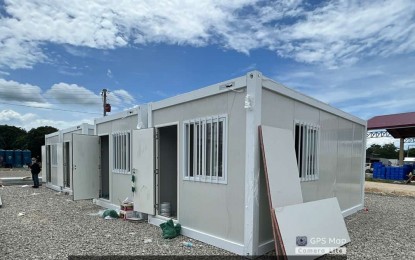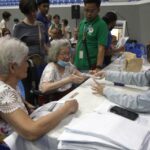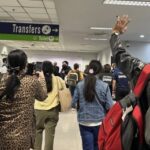MANILA – Following the President’s call for all government agencies to assist victims of the two powerful earthquakes that struck Davao Oriental province on October 10, the Department of Human Settlements and Urban Development is prepared to send modular shelter units to the province.
A team from the Central Office and Regional Office 11 has been mobilized to determine the specific assistance required by affected local government units in Davao Oriental, working in close coordination with other government agencies and non-government organizations.
The modular shelter units will serve as temporary housing for families displaced by the magnitude 7.4 and 6.8 earthquakes.
The modular units will be established within Bayanihan Villages, which will be identified by local government units.
“The establishment of Bayanihan Villages was ordered by the President to provide immediate assistance to our countrymen displaced by the earthquake,” officials stated.
“All government forces have been directed to provide all possible assistance to the Davao region affected by the earthquake.”
The department is collaborating closely with the Departments of Public Works and Highways, Social Welfare and Development, Health, and Information and Communications Technology, along with the Armed Forces and other government agencies and non-government organizations to ensure proper assistance reaches the victims.
“The President’s goal is for our countrymen to recover quickly from this calamity. That is why all government agencies, including the private sector, are working together,” officials added.
The department had already begun establishing Bayanihan Villages in three towns and one city in Cebu that were also affected by a magnitude 6.9 earthquake on September 30.
The modular shelter units were allocated for Bogo City and the towns of Daan Bantayan, San Remegio and Medellin.
MANILA
Manila is the capital of the Philippines and a major cultural and economic hub on the island of Luzon. Founded by Spanish conquistadors in 1571, it served as the center of Spanish colonial power for over three centuries. The city is known for its rich history, visible in the historic walled city of Intramuros, and its vibrant, modern urban landscape.
Davao Oriental province
Davao Oriental is a province in the southeastern part of Mindanao, Philippines, known for its stunning natural landscapes, including the UNESCO-listed Mount Hamiguitan Range Wildlife Sanctuary. Historically, the area was home to various indigenous groups long before Spanish colonization, with its official establishment as a province occurring in 1967 when it was separated from the larger Davao province. Today, it is a key ecotourism destination, famous for its beaches, waterfalls, and rich biodiversity.
Bayanihan Villages
Bayanihan Villages are community relocation housing projects in the Philippines, inspired by the Filipino cultural tradition of “bayanihan,” which refers to a spirit of communal unity and cooperation. They were historically established to provide new homes for informal settler families, often through government initiatives and the collective efforts of the community members themselves, who would help build each other’s houses.
Davao region
The Davao Region, located in southeastern Mindanao, is a major economic hub and administrative center of the Philippines. Historically, it was home to various indigenous groups like the Bagobo and Mandaya before becoming a key settlement under Spanish and later American colonial rule. Today, it is renowned for its vast agricultural lands, modern urban center of Davao City, and natural wonders like Mount Apo, the country’s highest peak.
Cebu
Cebu is a major island province in the Philippines, widely recognized as the country’s oldest city and the first Spanish settlement. Its history dates back to 1521 with the arrival of Ferdinand Magellan, who planted a Christian cross and forged the first friendly ties with local chieftains before his death in the Battle of Mactan. Today, it is a vibrant economic hub where visitors can explore historic landmarks like the Basilica del Santo Niño, home to the country’s oldest religious relic.
Bogo City
Bogo City is a major urban center located in northern Cebu, Philippines, which was officially chartered as a city in 2007. Historically, it began as a small settlement during the Spanish colonial era and grew into a vital trading and sugar-producing hub. Today, it serves as a key commercial and transportation gateway for the region.
Daan Bantayan
Daan Bantayan is a municipality located on the northern tip of Cebu Island in the Philippines. Historically, its name translates to “Old Bantayan,” and it is believed to be the original settlement of the Bantayanon people before they moved to the nearby Bantayan Island. The area is known for its rich cultural heritage, pristine beaches, and the annual Holy Week “Kadaugan sa Mactan” festival which reenacts the historic Battle of Mactan.
San Remegio
San Remegio is a municipality located in the province of Cebu, Philippines, known for its long, sandy beaches and as a popular local tourist destination. Historically, it was a small fishing and agricultural village that has developed in recent decades, particularly with the growth of its coastline resorts and residential areas. The town’s name is believed to have originated from Saint Remigius, reflecting the strong Spanish colonial and Catholic influence in the region.






